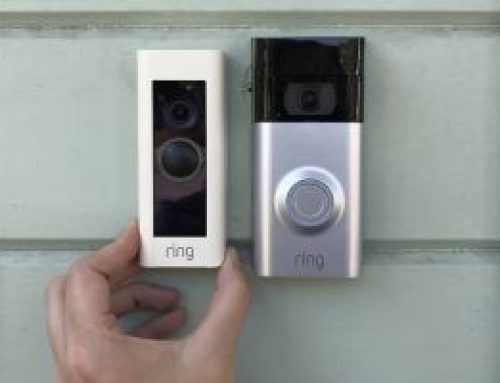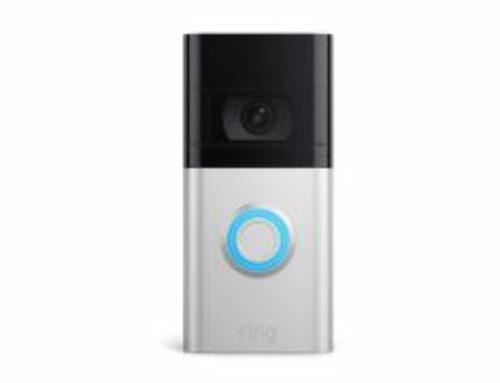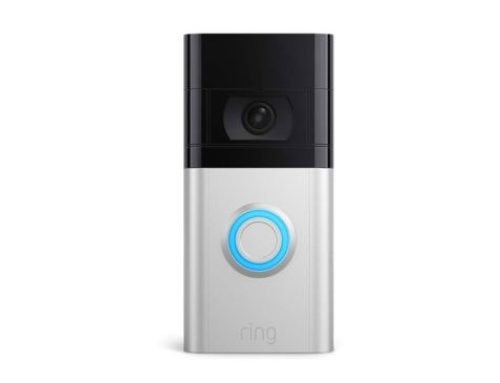Remote Support and New York Installs. Need a Service? Call us at (718) 500-4114.
Amazon-owned Ring and Google-owned Nest are two of the biggest names in doorbells. We break down the differences between the two to help you decide which is best for you. Consider whether you want a wired or wireless model, and whether it works with other smart home devices. If you already use Google or Nest smart home devices, go with the Hello video doorbell. The $99.99 Ring Video Doorbell (2020) might be just fine.
If you don’t get much activity at your door, an Alexa-powered Ring is probably best. Ring Video Doorbell Pro is Ring’s answer to the Nest Hello. It requires existing doorbell wiring, but installs in minutes and delivers sharp 1080p video. If you don’t want to mess with wires, opt for the 3 Plus instead; it’s a wireless, battery-operated option. The Ring Peephole Cam is designed for apartment dwellers and those who use a peephole lens.
The Ezviz DB1C Wi-Fi Video Doorbell is one of our newer favorites. The RemoBell S has more features than any other $99 smart doorbell.
If you’re looking for a video doorbell, there are a lot of options to choose from, and narrowing them down can be difficult. Amazon’s Ring and Google’s Nest are two of the most popular smart doorbells on the market, but which one is perfect for you? We’ve tried or are testing every major model on the market, and we’re here to help you balance the benefits and drawbacks of each.
This isn’t just a two-product comparison, either. The $169.99 Video Doorbell Pro, the $199.99 Video Doorbell 3 Plus, and the $129.99 Peephole Cam are just a few of the types available from Ring alone.
Ring also recently released the $249.99 Video Doorbell Pro 2, which includes head-to-toe video and a new Bird’s Eye Picture function that provides an aerial view of your home. It appears to be another intriguing choice, but we haven’t yet completed our testing, so stay tuned to see if it makes the list. The business is also preparing to release the $199.99 Video Doorbell 4, which has color Pre-Roll films of all motion occurrences and Quick Replies, which allows it to answer the door for you when you’re busy, as opposed to the third-gen model.
What Features Do You Look for in a Video Doorbell?
When looking at video doorbells, think about whether you want a wired or wireless model, as well as whether it will interact with your other smart home devices.
You should also consider how much foot traffic passes through your doorway. If the answer is “a lot,” you might want to choose the Hello, which provides live streaming and continuous video recording 24 hours a day, seven days a week. Despite several demands, Ring doorbells do not have that feature, albeit several of its models, such as the Video Doorbell Pro and Video Doorbell 3 Plus, do include Pre-Roll technology, which allows you to see what was going on before the motion sensor was activated. Meanwhile, if your door doesn’t get much traffic, a less expensive option like the $99.99 Ring Video Doorbell (2020) can suffice.
Fortunately, the wide range of models ensures that there is a video doorbell to fit every home. Continue reading for our recommendations for each case.
If you already have a Google Assistant device, such as a Nest Hub smart display, a Nest Mini smart speaker, or a Chromecast, go with the Hello video doorbell if you can afford it.
Hello, Nest
In our tests, the Hello received top ratings for its ability to recognize individuals using face recognition technology, its crisp HD video, stylish appearance, and connectivity with other smart home devices. You may ask your smart speaker to relay video from the doorbell to your TV if you pair it with a Nest Mini and Chromecast, for example. The Hello can also stream video to a screen-equipped Amazon Alexa device, such as the Echo Show, as well as Fire tablets and Fire TV devices, but it won’t work with Alexa devices that don’t have a display.
Keep in mind that the Hello requires an existing chime box and that the installation technique necessitates the use of electrical wiring. And be sure to budget at least $6 per month or $60 per year for a Nest Aware plan, which is required to make use of many of the Hello’s features, including 24/7 continuous recording, Familiar Face and intelligent alerts, and the ability to create clips and time-lapses, configure activity zones, and access your video history.
Ring Video Doorbell Pro if you prefer Amazon Alexa
If you have an Alexa-enabled smart home, a Ring video doorbell is a good choice.
Ring’s answer to the Nest Hello is the Video Doorbell Pro. Because of its small design, removable faceplates, and crisp 1080p video day and night, it got our Editors’ Choice award. It, like the Hello, requires existing doorbell writing, although we found it to be rather simple to install throughout our testing. It costs a little more upfront than the Hello, but the monthly cloud storage fees are less expensive (beginning at $3 per month or $30 per year).
Alexa works nicely with Ring video doorbells, allowing you to hear and speak to visitors at your front door from compatible smart displays, speakers, tablets, and Fire TV devices. On an Echo Show or Echo Spot, you can also watch live video.
Ring’s doorbells aren’t quite as capable when it comes to Google Assistant integration. You can use Google Assistant to start a new video recording, but you can’t view footage from your Ring doorbell on a Nest Hub smart display or a Chromecast-equipped TV.
If you don’t want to deal with wires, the Ring Video Doorbell 3 Plus is the way to go.
The Ring Video Doorbell 3 Plus is a great option if you don’t have any current doorbell wiring or don’t want to mess with it.
The Ring Video Doorbell 3 Plus is an upgraded version of the original Ring Video Doorbell.
The Ring Video Doorbell 3 Plus is a wireless, battery-operated model with excellent 1080p video that installs in minutes. It’s not as sleek-looking as the Pro, but it also offers motion detection, support for Amazon Alexa voice commands, and Pre-Roll buffering technology. Battery life depends on usage, but when it requires charging, all you have to do is remove the battery, bring it inside, and power it up using the included USB charging cable.
If you live in an apartment, consider installing a peephole camera.
Living in an apartment doesn’t mean you have to forego the benefits of a video doorbell. The Ring Peephole Cam is specifically designed for apartment dwellers or anyone who uses a peephole lens to see who is at their door.
Ring Peephole Cam
It’s wireless, easy to install, and you can still use it as a traditional peephole lens. But it also gives you all the benefits of a video doorbell, including HD video, two-way talk, and motion-activated notifications.
Don’t Overlook the Alternatives: Nest and Ring vs. Arlo, RemoBell, and More
Nest and Ring are two of the better-known video doorbell makers, but they have plenty of competition.
The RemoBell S
The Ezviz DB1C Wi-Fi Video Doorbell is one of our newer favorites. It offers more features than any other $99 smart doorbell, including sharp HD video with a wide viewing angle, cloud and local video storage, voice control support, and compatibility and lots of third-party smart devices. The RemoBell S is another compelling $99 option worth a look. It’s loaded with features including motion detection, free cloud storage, and Alexa and Google Assistant support. And the $199.99 Arlo Video Doorbell is a terrific choice if your home is already equipped with any of the company’s indoor and outdoor security cameras.
For more, be sure to check out our full rundown of the best video doorbells we’ve tested







